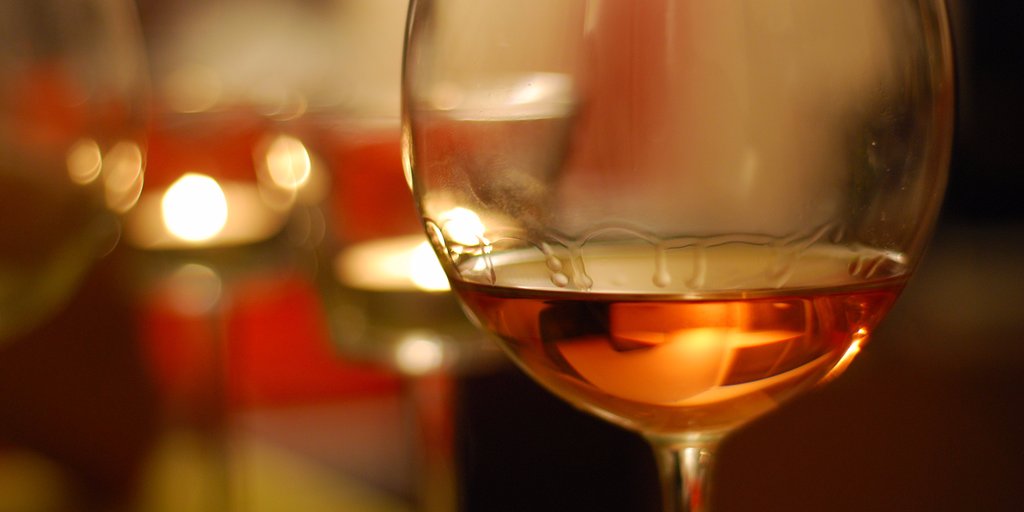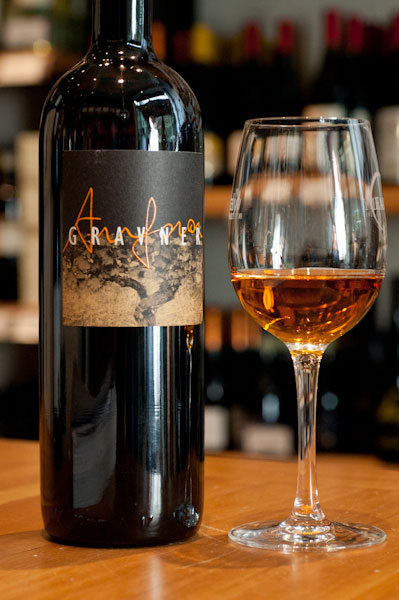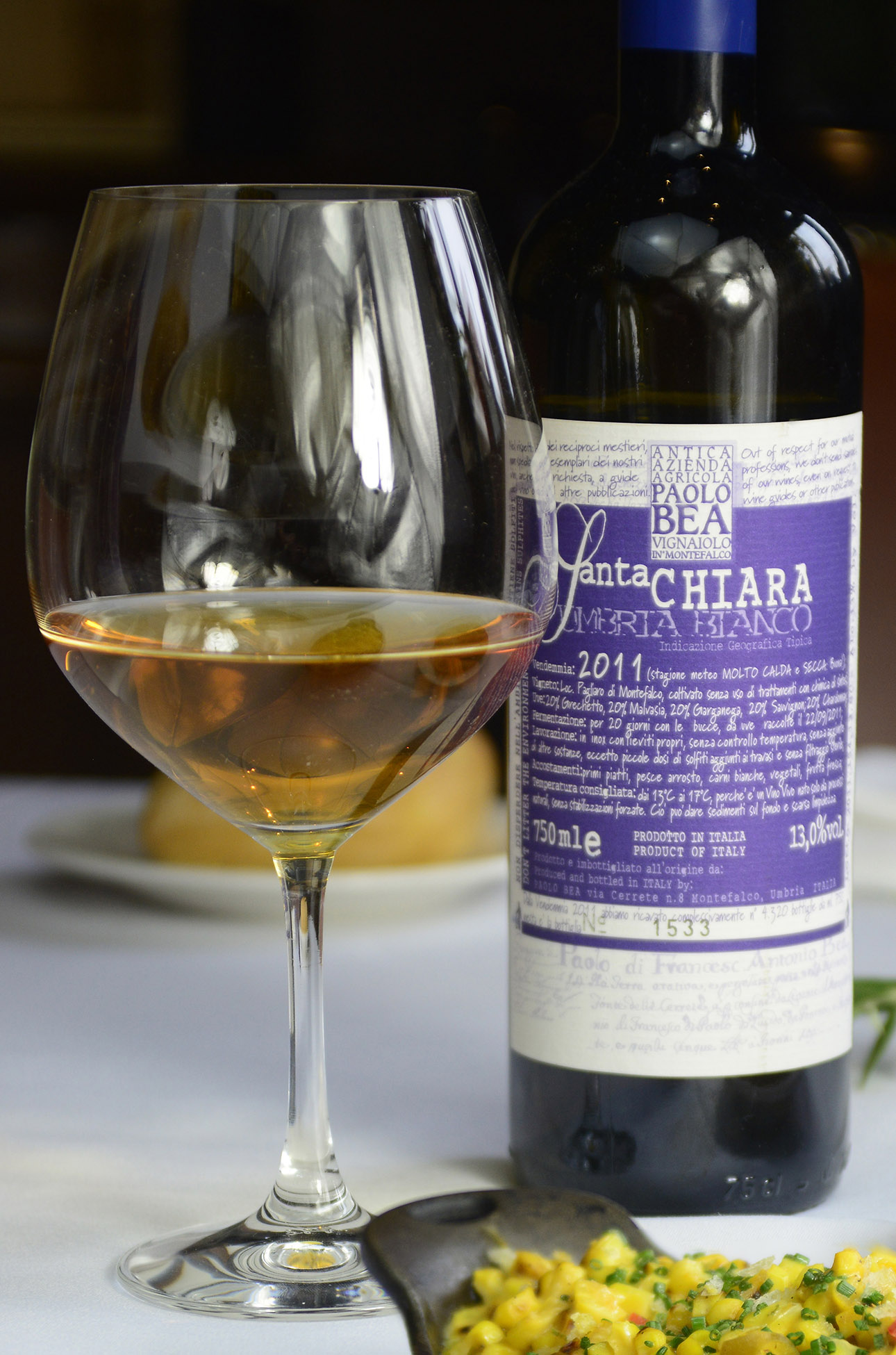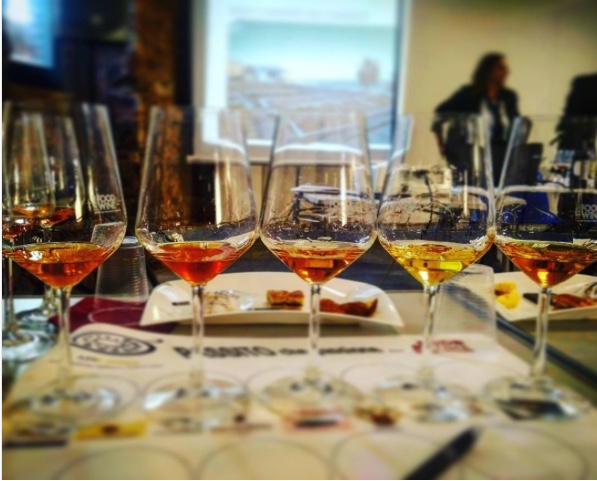In New York City, a wine glass shines with a distinct orange glint. To the untrained eye, it might be mistaken for rosé, alas it is orange wine. Here are 5 Orange Wines you need to try.
By Hannah Carroll

Orange Wine
To the untrained eye, it might be mistaken for easy drinking, easily forgettable rosé — but it’s far from it. This wine is funky, dirty and nips at your gums like a red.
But it isn’t that either.

It is an orange wine; dry and unexpectedly full-bodied with notes of walnut and apricot. And no, it’s not produced with orange peels.
Orange wine gets its name from its color. It’s essentially a white wine, produced like a red, falling somewhere along the color spectrum of fall foliage.
For the past few years, people in the wine business from New York to Los Angeles have been buzzing about this trendy, oddly-hued wine. But even as more modern circles welcome it, some say its unusual complexity might be its downfall.
“They look like they should taste like a white wine – light, bright and fruity, but an orange wine is anything but,” said Mike Zygmonski, is a certified sommelier through the Court of Masters Sommeliers, level 2, and is the wine director at SoDel Concepts in Delaware. “It hits you hard on the first sip like red.”
Most modern whites are pale in color because the clear pressed juice is immediately separated from the grape skins; for orange wines, the juice is kept in contact with the skins for a week to a year, picking up tannin, weight, color, extra aromas and flavors.

“They have a lot going on,” Zygmonski said, recommending a first-timer should approach orange wine with an open mind. “Each bottle and each sip is … an experience.”
One orange wine can be very different from another, adding another layer of complexity for wine experts to decipher.
Zygmonski recommends enjoying them with appropriate foods — salty, smoky, richer fare like dirty pasta, hard cheeses and cured meats are a safe bet — and with people who will also appreciate them. Even so, it still might not be love at first sip.
“Some will love orange wine immediately, some will be hate it, and some will be intrigued,” he said.
Producing such an intriguing wine pays homage to ancient techniques used more than 1,000 years ago.
Its rise in modern wine circles is often attributed to Josko Gravner, an Italian winemaker who in the late 1990s, decided to resurrect the old school method of fermenting batches of wine buried underground in clay pots. Instead of removing the grape skins he left them on. The result? Pungent, interesting and multi-faceted, orange colored wine.
Now, vintners from Long Island to Australia are jumping in on the trend.
James Tracy, winemaker at Channing Daughters Winery in Bridgehampton, New York, has been making them since 2004.
Like some counterparts in Italy and Slovenia, Tracy ferments his white wines on their skins before maturing them in Slovenian and/or French oak. Channing Daughters’ three skin-contact wines are musky, with sweet vanilla spice and orange-cream notes, intense fruit and floral flavors and bristling tea-leaf tannins.
“We started because they are delicious … plus our fruit from both an analytical and organoleptic view is perfect for the style,” Tracy said.
In May, New York Post proclaimed orange wine to be the “new rosé.” Vice recently wrote they are the “Wild West of wine, waiting entirely to be explored.”
FIG, a James Beard award-winning restaurant in South Carolina, and Four Horseman in Brooklyn are now both offering a variety of orange bottles. “We serve one-to-one, rosé to orange wine,” said Justin Chearno, wine consultant at Four Horseman in a recent article published by The Huffington Post.
For a lot of people, the fact that orange wine is unusual and still misunderstood is reason enough to try it. W.R. Tish, managing editor of Beverage Media Group, describes the category as an “oddball … strange even when ‘good,’ and indeed hip with the hipster-sommelier crowd.”
Still, not everyone is a fan.
“I’m more intrigued than enamored by them,” said Josh Wesson, self-proclaimed foodie and wine expert from Milton, Delaware. “I’d rather enjoy a wine that will let me savor it.”
Peggy Raley-Ward, who opened Delaware’s first winery — Nassau Valley Vineyards — in 1993, hadn’t heard of orange wine until just recently. Although she understands why wine makers and experts are interested, she does not believe the trend will have much traction.
“Everything sees a renaissance from time to time,” she said. “Cocktails, for example, are having a huge revival. So is beer. But wine does not need any deviation. If you want a full-bodied wine, just drink a red.”

Orange wine courtesy of @Marilinapaterno
5 orange wines to try
2013 Iago’s Wine Chinuri – Kartli Republic of Georgia; $19
2011 Kabaj Rebula – Goriška Brda, Slovenia; $24
2014 Dirty & Rowdy Sémillon – Yountville, California; $39
2012 Foradori Nosiola Fontanasanta – Vigneti delle Dolomiti, Italy; $48
2008 Radikon Ribolla Gialla – Friuli-Venezia Giulia, Italy; $55


2 comments
Thinking I might need to get with the new trend now, looks good!
You should try I Carpini Timox, or Feudi di Romans Ribolla Gialla from Franco Wine Import. The first wine is aged in amphorae and has a very distinctive flavor.